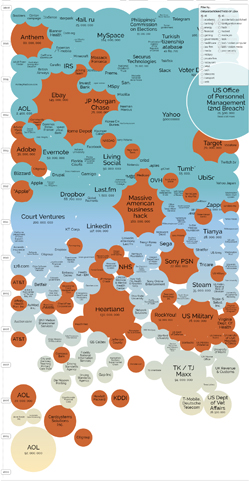RedHat Takes A Fall
 Red Hat announced a 15 percent increase in quarterly revenues to $322.6m, though it reported a 12.5 percent decline in profits to $35m.
Red Hat announced a 15 percent increase in quarterly revenues to $322.6m, though it reported a 12.5 percent decline in profits to $35m.
Red Hat, which last year became the first Linux vendor to hit $1bn in revenues in a fiscal year, has revealed revenue figures that once again show it can repeat that performance in 2013. The firm announced that its second fiscal quarter revenues were up by 15 percent from the same quarter a year previously to $322.6m, however its profits fell by 12.5 percent from last year to $35m.
Charlie Peters, EVP and CEO of Red Hat said the firm’s earnings per share would have been higher if the firm had not made two large purchases. Peters said, “This quarter marked a significant ramp-up in investments in our nascent storage business, with the launch in late June of Red Hat Storage Server 2.0. Furthermore, we announced two small technology acquisitions in the middleware space to further round out our offerings, which decreased the quarter’s EPS by approximately $0.01 per share due to one-time closing costs.”
Red Hat’s $1bn fiscal year was seen as a watershed moment for the commercial viability of Linux, as it showed that the open source company could compete with large, established competitors such as Microsoft and Oracle and still make a considerable amount of cash.
Intel Changes Course
 Intel has changed its strategy when it comes to talking about its next generation technology. Back at IDF 2012, the company mentioned Haswell second generation 22nm CPUs and even explained some of its core technology, although it didn’t actually show any demos.
Intel has changed its strategy when it comes to talking about its next generation technology. Back at IDF 2012, the company mentioned Haswell second generation 22nm CPUs and even explained some of its core technology, although it didn’t actually show any demos.
People got excited about Core i5 and Core i7 next generation Haswell parts that can ship with 10W TDP, but Intel hasn’t actually shown anything. When we asked a few people inside the company, they said that Intel isn’t planning on revealing too much, as they want to surprise the competition a bit more than they used to.
It’s quite clear that Haswell has every chance to beat AMD’s including 2013 Vishera successors. Intel obviously wants to see the market’s reaction to many ARM competitors, since some of them run Windows 8 RT just fine.
Will Intel Bring Medfield To The US?
September 28, 2012 by admin
Filed under Computing, Smartphones
Comments Off on Will Intel Bring Medfield To The US?
 An Intel powered phone powered by a 2GHz Medfield processor is a huge leap forward for Intel. After few tries they finally got a significant design win.
An Intel powered phone powered by a 2GHz Medfield processor is a huge leap forward for Intel. After few tries they finally got a significant design win.
Still many want to see an Intel design win the US market and we were told that this can be expected at 2013 as the USA network providers demand a LTE capability for all their new phones. Now even the iPhone has LTE and it was getting hard even for Apple to convince people in the US that LTE is not relevant.
Intel is aware of that and it is expected that Intel can finish its LTE modem in 2013 and that it will have a LTE enabled chip with its next generation. It’s interesting that this is the same timing for Nvidia LTE while Qualcomm already stunned the market with its S4 LTE enabled chip that everyone wants.
The new Intel-based RAZR doesn’t have LTE support, but even in the US only major cities and metropolitan areas have it decent LTE coverage. Even the suburbs in Silicon valley and surrounding towns have weak and intermittent LTE coverage, while 3G has been almost everywhere you can have a cell signal.
Intel got its first major designs out, and it plans to continue winning the major manufacturers with Intel inside powered phones.
Intel Going High-Performance
 Intel has been hinting that it is developing high-performance lower power server chips to speed up cloud services or data-intensive applications like analytic.
Intel has been hinting that it is developing high-performance lower power server chips to speed up cloud services or data-intensive applications like analytic.
Apparently this will involve the integration of a converged fabric controller inside future server chips. This will make server communication faster while helping data centers operate at peak efficiency.
Raj Hazra, vice president of the Intel Architecture Group said that Fabric virtualises I/O and ties together storage and networking in data centres. If you add in an integrated controller you get a wider pipe to scale performance on cloud platforms. He said that the integrated fabric controller will appear in the company’s Xeon server chips in a few years as part of Intel’s cunning plan to bring the controller to the transistor layer.
TSMC Makes Expansion Plans
 TSMC is expected to spend $10 billion next year in capital works as Apple plans to contract the outfit to build its next-generation processors.
TSMC is expected to spend $10 billion next year in capital works as Apple plans to contract the outfit to build its next-generation processors.
According to the Chinese-language Economic Daily News TSMC has informed the equipment suppliers of its decision to hike capital expenditure for 2013 to US$10 billion. This indicates that TSMC has overcome technical problem with 20nm process, which Apple’s next-generation processors are said to use.
It also suggests that Jobs’ Mob is speeding up its reduction of work it gives Samsung. Apple has reportedly sent around 200 design engineers to help TSMC get familiar with the company’s next-generation processor designs at TSMC’s facility in Central Taiwan Science Park.
Samsung Goes HSA
 It seems that the IFA 2012 show in Berlin was a good show for AMD as well, or to be precise, it was good for the HSA (Heterogeneous System Architecture) Foundation founded by AMD, ARM, Texas Instruments, Imagination and Mediatek. Samsung has joined up alongside six new members.
It seems that the IFA 2012 show in Berlin was a good show for AMD as well, or to be precise, it was good for the HSA (Heterogeneous System Architecture) Foundation founded by AMD, ARM, Texas Instruments, Imagination and Mediatek. Samsung has joined up alongside six new members.
The HSA Foundation was created back in June at AMD’s Fusion Developer Summit as a foundation that will deliver new user experiences through advances in computing architectures in order to improve power efficiency, performance, programmability, portability across computing devices and general support of software across a broad spectrum of devices in order to remove the need for code rewriting for various different platforms.
Senior Manager of Technology Marketing at AMD, Sasa Marinkovic, noted on the AMD blog that there is no doubt that the HSA Foundation is off to a good start and in addition to Samsung, they are more than happy to welcome six additional companies including Apical, Arteris, MulticoreWare, Sonics, Symbio and Vivante.
Toshiba Cancels Windows Tablet
 Toshiba on Tuesday officially confirmed what Microsoft recently hinted at: It won’t be delivering a Windows RT-based tablet anytime soon.
Toshiba on Tuesday officially confirmed what Microsoft recently hinted at: It won’t be delivering a Windows RT-based tablet anytime soon.
“Toshiba has decided not to introduce Windows RT models due to delayed components that would make a timely launch impossible,” the Japanese electronics company said in a statement to Bloomberg earlier today. “For the time being, Toshiba will focus on bringing Windows 8 products to market. We will continue to look into the possibility of Windows RT products in the future while monitoring market conditions.”
Last June, Toshiba showed two Windows RT-based concepts — a tablet with a docking station and a “clamshell” design that resembled a keyboard-equipped ultralight notebook — at Computex. The devices were not operational, however.
Based on those concept devices, most had included Toshiba in the slowly-growing list of OEMs (original equipment manufacturers) that were believed to be preparing Windows RT hardware for launch this year or early next.
Will ARM Get OpenCL Certification?
 ARM has submitted its Mali-T604 GPU for OpenCL certification.
ARM has submitted its Mali-T604 GPU for OpenCL certification.
ARM’s Mali GPUs have so far shyed away from GPGPU support, however as smartphones and tablets are not expected to see an ever growing number of processor cores the cries for OpenCL support in its GPUs have been growing louder. Now ARM has submitted its Mali-T604 GPU to the Khronos consortium for full profile OpenCL certification.
The Khronos consortium oversees the development of OpenCL and the high-level language is supported by a number of firms including AMD, Nvidia and Intel on their latest GPUs. However until now there hasn’t been an OpenCL certified GPU that is used in smartphones, though firms such as Zii Labs also boast OpenCL support for their chips.
ARM said, “Building on a scalable multicore, multi-pipeline architecture design, the Mali-T600 Series GPU includes a number of advanced features. In particular, native scalar and vector operations for OpenCL’s integer and floating point data types (including 64-bit); support for static and dynamic compilation; hardware accelerated image and sampler data types; fast atomic operations and compliance to IEEE754-2008 precision requirements.
Intel Preparing New SSDs
 In addition to the recent price drop for its 320, 330 and 520 series SSDs, Intel is preparing a slight refresh scheduled to launch in Q3 and Q4 2012, according to the recently leaked roadmap at Chinese.VR-Zone.com.
In addition to the recent price drop for its 320, 330 and 520 series SSDs, Intel is preparing a slight refresh scheduled to launch in Q3 and Q4 2012, according to the recently leaked roadmap at Chinese.VR-Zone.com.
The roadmap kicks off with a rather interesting entry-level 300 series that will apparently get a new 335 series update in Q3 2012. According to the roadmap, the 335 series will initially launch in 240GB capacity and get 80 and 180GB model update in Q1 2013. The new 335 series will most likely still be based on the same SF-2281 controller, be available in 2.5-inch form factor with the SATA 6Gbps interface, and will probably be paired up with a tweaked firmware and a new 20nm NAND flash memory.
ARM Profits On The Rise
 ARM has reported good second quarter financial results, with profit rising by 23 per cent to $102.97 million.
ARM has reported good second quarter financial results, with profit rising by 23 per cent to $102.97 million.
ARM has been riding high in the public consciousness thanks to firms such as Qualcomm, Texas Instruments and Nvidia pushing its chip architecture into smartphones and tablets. The firm announced it managed to take in $209.78 millio in revenue during the second quarter, a 15 per cent increase from the same period last year, while net income rose even faster by 23 per cent to $102.97 million.
ARM said two billion chips using the firm’s various design models were shipped during the quarter, which represented a nine per cent increase from last year. The firm revealed that its core money making operation, processor royalties, rose by 14 per cent.
Warren East, CEO of ARM said, “ARM’s royalty revenues continued to outperform the overall semiconductor industry as our customers gained market share within existing markets and launched products which are taking ARM technology into new markets.
“This quarter we have seen multiple market leaders announce exciting new products including computers and servers from Dell and Microsoft, and embedded applications from Freescale and Toshiba. In addition, ARM and TSMC announced a partnership to optimise next generation ARM processors and physical IP and TSMC’s FinFET process technology.”








 Sign up for our Technology Newsletter
Sign up for our Technology Newsletter